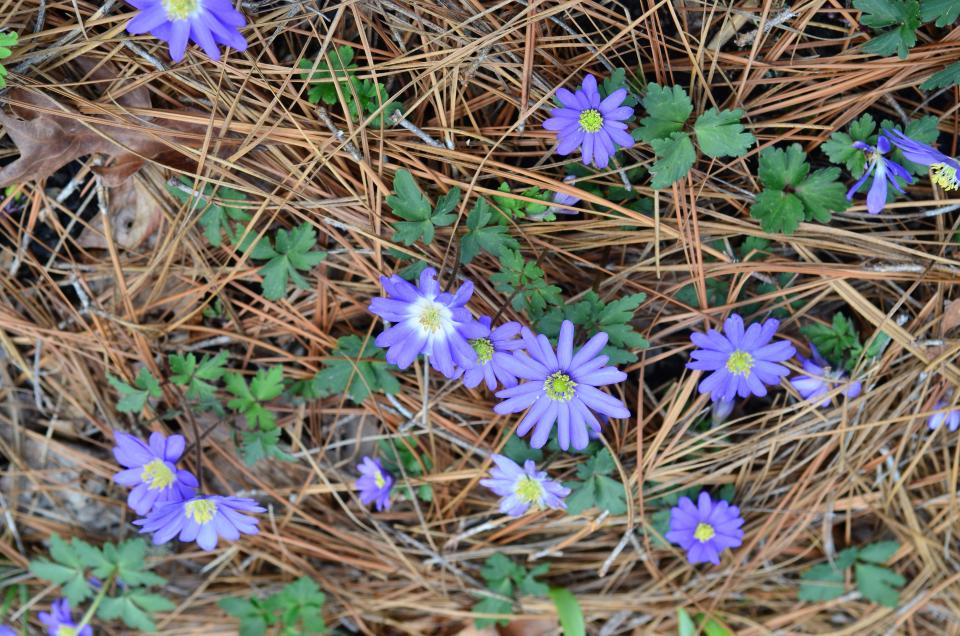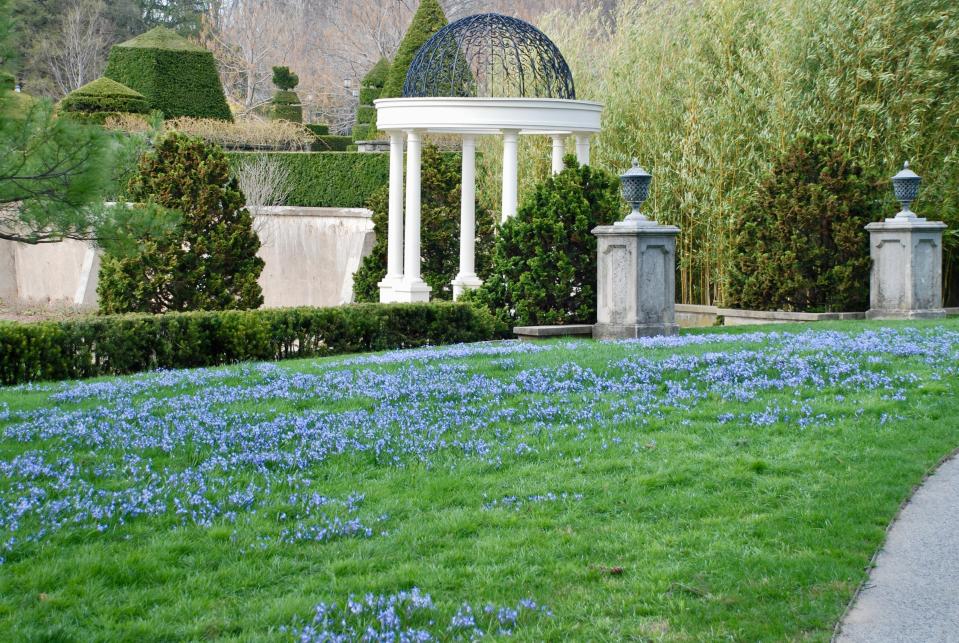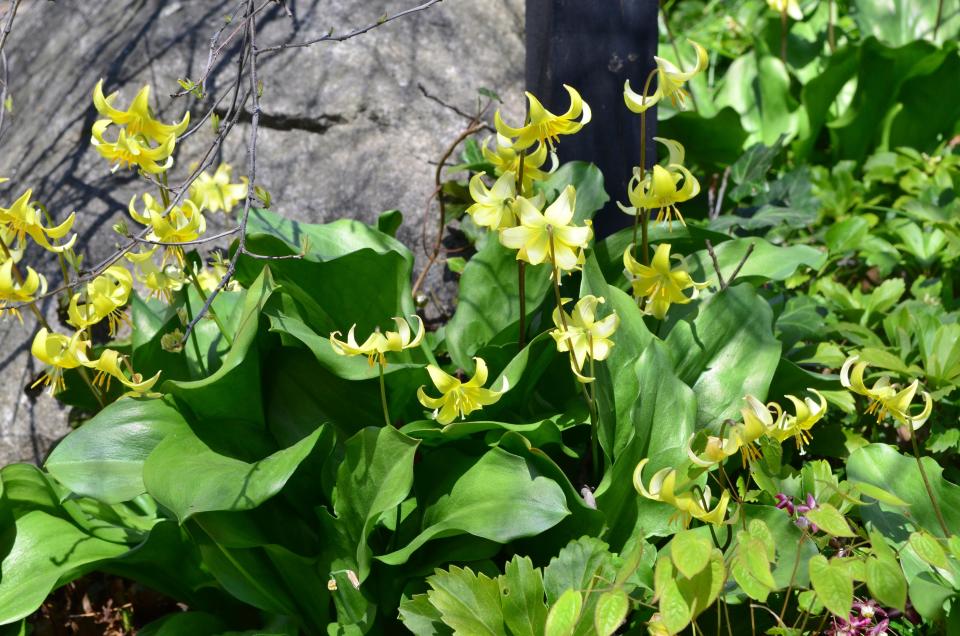Let's talk spring. Time to think about spring flowering bulbs
Fall is the time people start thinking about planting bulbs for Spring. Tulips and daffodils come to mine first and you see lovely displays promoting these bulbs. However, there are other bulbs that make a wonderful addition to a garden too. Bulbs that you might not think about that will fill a corner of your garden or carpet the ground. I remember years ago walking through the neighborhood where we were living at that time and seeing a blanket of tiny blue flowers in a neighbor’s lawn that made such an impression that I remember it to this day.
Yes, daffodils and tulips are stars in the garden in the spring but some of the other bulbs can be just as rewarding. Many of the other bulbs have small flowers and can be tuck into a smaller space or under a tree or around some shrubbery and the larger ones can be used to make a dramatic statement. There is a wide selection of spring flowering bulbs to plant in the fall, from diminutive snowdrops to stately alliums.
I am not sure why but I am partial to blue flowers. Some of these spring flowering bulbs that have charming blue flowers are Blue Anemone, English bluebells, Siberian Squill, and Muscari. These are all charming and reliable, and planted in mass makes them stand out, creating a memorable site.

One exceptionally hardy bulb, native to Siberia, Russia, and Eurasia, is one of the first to bloom in early spring, Siberian Squill (Scilla siberica). The Brilliant blue bell-shaped flowers grow singularly on slender stems above the grass-like foliage. The bulbs multiply and naturalize quickly, self-sowing themselves all around. They grow from 3 to 6 inches tall and wide and can carpet a lawn or naturalize in open woodlands, or underneath deciduous trees and shrubs.
Another charmer is Anemone blanda blue shades. These beloved Grecian windflowers make an attractive ground cover with daisy-like flowers and fern-like foliage. This charming flower is deer and rodent-resistant. These are corms that are black and irregularly shaped with wrinkles. The flowers are quite small, growing to about 4 inches tall.

Grape hyacinths are much more popular and more widely known than the first two I mentioned. I use to not be a fan of these until I visited Keukenhof Garden in Holland, an unbelievable garden built buy the different bulb companies to display all the spring bulbs grown there. They had Muscari planted like rivers of blue flowers that were incredibly beautiful and breathtaking. It made me want to come home and try to create a display that looked like a stream too. These little bulbs are sweetly fragrant with a grape scent, are deer-resistant, and naturalize well. They too are best if planted in a mass, making a dramatic statement. There are different shades of blue ones with armeniacum being the most popular one available.
If you are looking for charming flowers that are not blue, one I love are trout lilies (Erythronium). These dainty little flowers are easy to grow and many are native to North America. They have about a half dozen names: fawn lily, trout lily, dog’s-tooth violet, adder’s tongue and fawn lily. The native ones are yellow and occur in moist woods, on wooded slopes and bluffs, and along streams in the shade of the trees. This ephemeral spring bloomer will flower beautifully and will form colonies if given the proper growing conditions. The plants mottled foliage resembles the markings of brook trout, hence the common name trout lily.

Alliums are quire the rage now. I noticed in a mail order catalogue, where there use to be just a few varieties offered, now there are dozens. I counted 34 different ones offered in the John Scheepers fall catalogue for 2023 planting this season. If you are not familiar with Alliums, they are a member of the onion family and display a flower that is bold, dramatic, and statuesque. I just ordered some Ambassador allium from Brent and Becky bulbs because I wanted to make a dramatic display of color. These are supposed to be tall, showy and are touted to be the longest blooming of the large alliums. I plan on planting them with yellow baptisia to try to get a dramatic display of color. The vivid purple of the allium and the bright yellow of the ‘Lemon Meringue’ baptisma will make a stunting show of color since they bloom at about the same time.
Now if you are wondering why you need to plant these bulbs in the fall and have to wait for months to see your handy-work, bulbs require a period of chilling to initiate flowers. Most spring-flowering bulbs require 10 to 13 weeks of temperatures below 40 degrees Fahrenheit to produce flowers. Bulbs need to put down good roots before they sprout foliage and flower. The roots will then be able to supply the tops with water and nutrients for the bulbs to produce the flowers the following year.
Bulbs do best if planted in amended soil and are planted at the proper depth which is generally 2 to 3 times deeper than the diameter of the bulb. After planting be sure to water deeply and again before the ground freezes if you do not have a good rain. Then when spring comes, you will have a glorious display of flowers and you will say; “the time I spent planting bulbs was well worth it”.
Betty Montgomery is a master gardener and author of “Hydrangeas: How To Grow, Cultivate & Enjoy,” and “A Four-Season Southern Garden.” She can be reached at bmontgomery40@gmail.com.

This article originally appeared on The Fayetteville Observer: Fall means it's time to plant bulbs for spring.

